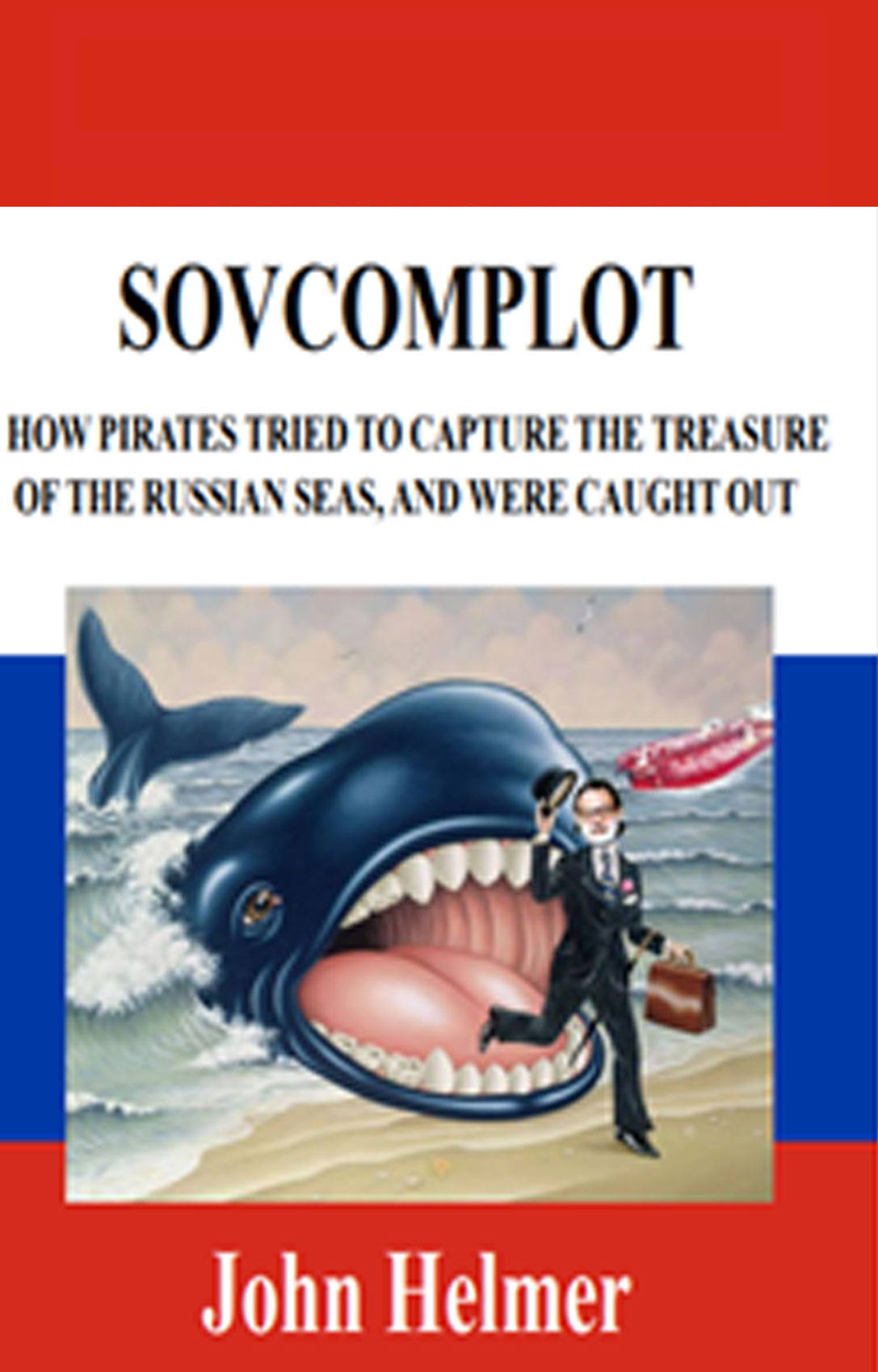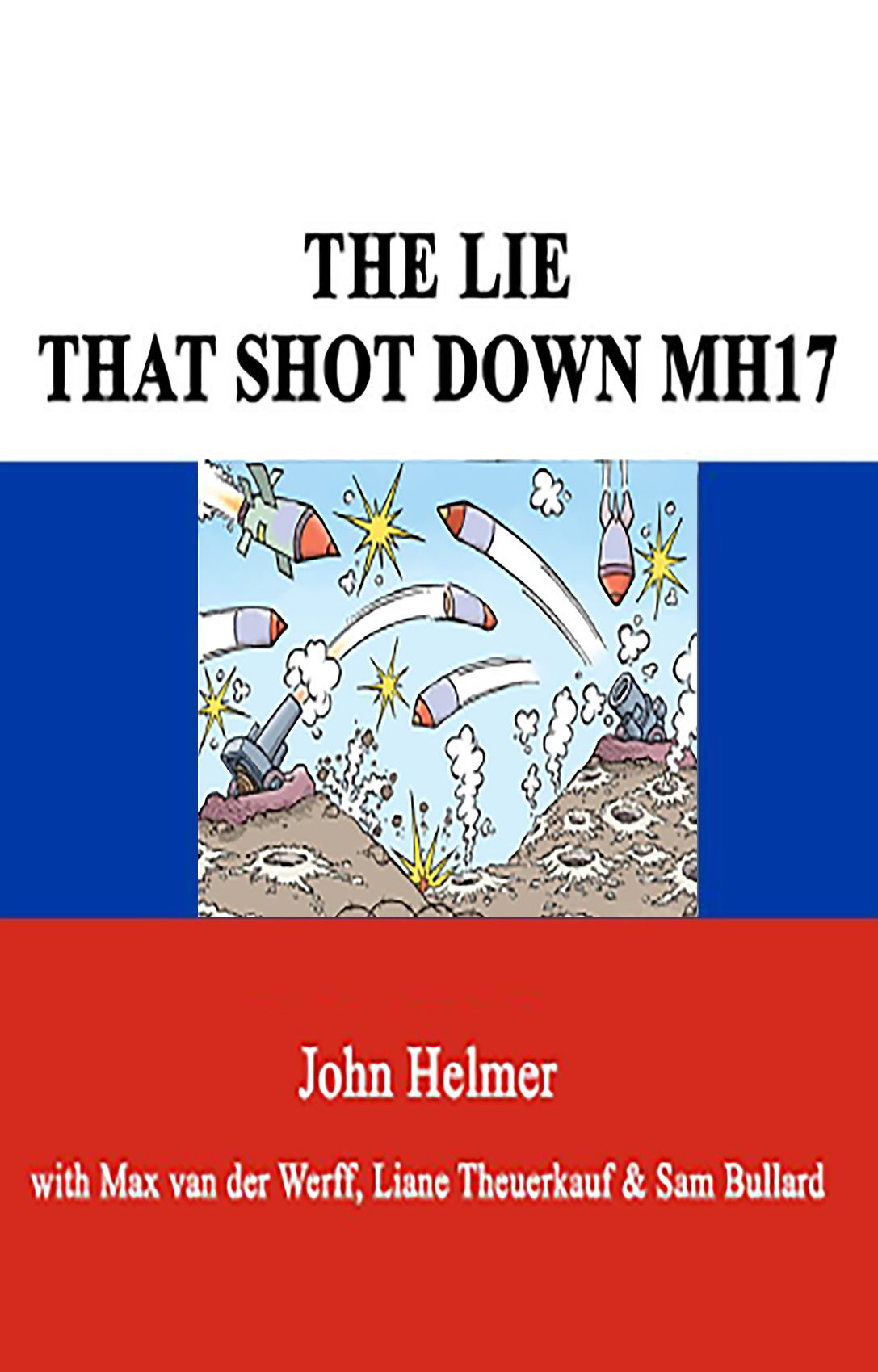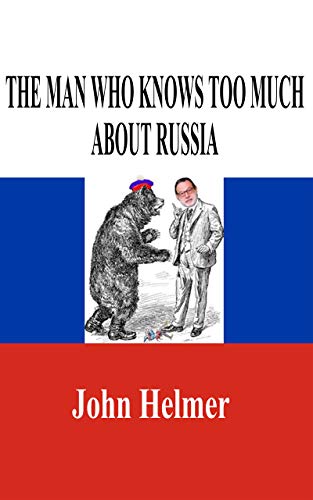By John Helmer in Moscow
For the hundred and fifty years between the Opium Wars and the end of World War II, the China Discount was notorious in the Shanghai Bund, on the bank of the Huangpu River. It represented the gap between the little western traders would agree to pay for Chinese-made goods, and the best their Chinese sellers hoped to fetch.
These days, China’s commercial demand has reversed the trading advantage. Since Chinese demand represents such a large share of the global market, especially in minerals and metals, the China Discount is now the gap between the price western sellers offer for their commodities, and what China agrees to pay. Converting the China Discount into a premium is the dream of all commodity exporters, but it is a commercial fight that requires nerves of steel.
Make that nerves of iron, and of potash. A recent report from Goldman Sachs draws instructive parallels between the way China buys in the global iron-ore market, and the way it has been buying potash — at least until recently, for the Russian sellers of potash look to have succeeded in eliminating the China Discount.
“The iron ore and potash markets exhibit similar characteristics,” argues Goldman Sachs analyst Edlain Rodriquez, “—low producer inventories, China’s strong appetite for product, solid global demand, concentrated supplier market, almost “prohibitive” barriers to entry, and expensive and long lead time greenfield projects. Using CVRD as a proxy for iron ore, that stock has surged 825% since early 2003, while iron ore prices increased 190%. Similarly, Potash Corp. is up 545% but domestic potash prices have only risen 85%.”
A year ago, potash miners Uralkali (Russia) and Belaruskali (Belarus), and their trading alliance called the Belarussian Potash Company (BPC), halted shipments of potash to China for seven months, while the two sides argued over price. Vladislav Baumgertner, chief executive of Uralkali, says his strategy was “price over volume”. Cutting the China Discount is another way of putting it.
Uralkali and Belaruskali lost significant volume of production unsold during the bargaining period. In the interval, distributors of potash in China were forced to run down their inventories to meet the inevitable domestic demand. By July 2007, the two sides came to an agreement on price. This was increased by $25 per tonne for the second half of 2006; and another $5 on top in 2007. Next year, as the gap closes between what China and the rest of the world pay for potash, the China Discount will be gone.
Potash, as the name indicates, was first produced by burning hardwood, and refining the potassium from a soluble solution. Its ancient uses were in the manufacture of glass, soap, and crop fertilizers, and it is the last of these that predominates today, supplying one of the key nutrients for plant and crop growth. Instead of burning wood, however, most of the world’s supplies of this industrial mineral are mined; and the largest mineral reserves of potash are concentrated in just three countries – Canada, whose stocks are the largest at about half the global aggregate, according to the US Geological Survey; Russia, with more than a quarter; and neighboring Belarus, with 9%; altogether, the three hold 85% of global reserves.
In terms of production capacity, two linked Russian companies, Uralkali and Silvinit, trail just behind Belaruskali, which in turn is just behind Potash Corporation of Canada, and another North American producer, Mosaic. In the global market, the concentration of potash mining is greater than that of gold, silver, diamonds, nickel, copper, and bauxite.
The global trade in potash is even more concentrated, with just two syndicates dominant – Canpotex managing sales of the three North American majors – Potash Corporation, Mosaic, and Agrium – and Belarus Potash Company (BPC), a joint venture combining Uralkali and Belaruskali.
During the Soviet period, most potash produced in Belarus and Russia was consumed domestically, and little exported, leaving Canpotex and its producer shareholders free to dominate the export market. After the 1991 breakup of the USSR, and the loss of domestic agricultural subsidies for fertilizer, Canpotex was unable to resist the price declines that came with rising volumes of Belarussian and Russian supplies on the market. Growing global demand began to prod prices upward from 2003. Then in 2006, BPC took the initiative of suspending export sales during price negotiations with China and India. The outcome has been the eclipse of Canpotex, and the emergence of BPC as the global market-maker for potash, and swing producer.
As population growth drives demand for foodstuffs, and the arable land available to supply food shrinks, it is the mineral fertilizers which farmers use to cover the gap between consumer demand for calories, and the productivity of farm land to supply it. Thus, the biggest consumers of potash are the hungriest — China and India, followed by Brazil; nature has not endowed them with the sub-soil resources of potash to meet their own requirements. But with just two syndicates in control of trade, and just three major importers, last year’s tussle over price between Russia and China was fierce. BPC sought to bargain supply for a price increase of $40 per tonne for China, while holding the line with India. On the other side of the negotiating table, the Chinese wanted a reduction of $20 per tonne, and the Indians also sought a price cut.
BPC won the contest. Both the Chinese and Indian prices have risen – the Chinese price by $25/tonne; the Indian price on hold in 2006, and up by $50/tonne in 2007. But the immediate impact in the first half of 2006 was a cutback in both output and exports for Uralkali. Then in October, a flood forced a halt to production at one of its mine units. The combination reduced Uralkali’s mine output from 5.4 million tonnes in 2005 to 4.2 million tonnes in 2006. The mine losses have been totaled at about $80 million, while the combination of factors reduced net sales from $725 million in 2005 to $613 million in 2006. Net profit dropped from $333 million to $129 million. Until the bad news struck, Uralkali was reporting net sales growth of 67% per annum, the highest in the global industry; and the lowest cost of sales. Ebitda margin in 2005 was 66%, also the highest in the business.
This year, China has agreed to pay BPC another $5 per tonne increase.
A market source told The Russia Journal “there is really no such a thing as the China Discount. It is true that, in general, Chinese buyers enjoy more favorable pricing, compared to smaller markets, due to the magnitude of their purchases. That also makes the negotiations in China one of the most important commercial negotiations of any year. Although the current price in China is lower than in the most of the Asian markets, it is important to stress that it is fixed on a free-on-board [fob] basis. So, customers are taking one-hundred percent of the freight risks on their shoulders. One year this policy is favorable to the buyer; another year it is more favorable to the sellers, due to the very volatile freight market in the past five years. One of the possible ways to try to eliminate possible price deviations between China and neighboring markets is to change the basic delivery terms to cost-of-freight [cfr]. ”
If Uralkali and BPC have become the muscular arm of the potash trade, China, and the larger Asian market, remain the consuming stomach of the trade. China buys 40% of Uralkali’s annual output of potash; India another 14%; and the countries of southeast Asia 13%. Altogether, the Asian market accounts for about two-thirds of Uralkali’s sales.
There are two demand drivers lifting the potash price in Asia. Food is one; fuel, that is to say biofuel, is the other.
As an agricultural fertilizer, the fundamentals for potash are unique. Nitrogen and phosphate are the other essential ingredients for plant growth, but both are produced from natural gas; they are abundant in supply; and because they depend on rising gas prices, profit margins for producers are being squeezed.
Biofuel comes in two types — bioethanol, refined mostly from crops of sugar cane and maize; and biodiesel, from vegetable oils distilled from palm, soybeans, and rapeseed. To offset the cost of filling the world’s fuel pumps with $70 crude oil, the European Union has already legislated to oblige the oil companies to blend into every barrel of fossil-based fuel a minimum of 2.5% biodiesel or bioethanol by 2009. Two years later, the blend must be 5% biofuel. Canada is considering legislation for the same 5% target. India has mandated 5% by 2012; 10% by 2017. Brazil, the world’s biggest producer of ethanol, is already up to 23% of biofuel per barrel, rising to 25% soon.
Brazil leads the world’s biofuel exporters, with 48% of the global supply of sugar-based bioethanol; that’s almost 5 billion gallons. The US is both a major producer of corn-based ethanol, and an importer. Germany produces roughly half the global supply of biodiesel, but last year China moved ahead of the European Union with production of just over 1 billion gallons of ethanol. According to a recent in May of this year by the International Fertiliser Association (IFA), domestic cropping has sufficed until now to supply the Chinese distillers. But as demand for the fuel outpaces supply, China will have to import both larger volumes of potash for the growers, and larger volumes of biofuel.
The IFA report calculates that in the 30 years between 1975 and 2005, global biofuel output rose from zero to 30 million tonnes. That was a drop in the bucket, compared to consumption in 2005 of 1.5 billion tonnes of oil in road transport. But the biofuel growth rate is accelerating. In the decade to 2015, biofuel output is expected to rise almost threefold to over 80 million tonnes.
Sources at Uralkali, which is based in Moscow and at the minesite in the central Russian region of Perm, say that Malaysia and Indonesia are important strategic markets. They are major producers of biofuel. The world’s largest palm oil producer and exporter, Malaysia has embarked on a comprehensive palm biofuel program since 1982, and has successfully established the use of palm methyl esters and a blend of processed palm oil (5%) with 95% petroleum diesel, as a fuel for the transport and industrial sectors. Indonesia has been increasing its area under plantation of palm oil, and it will soon overtake Malaysia as the largest palm oil producer in the world.
Major international firms are showing interest in developing the bio-energy sector in Indonesia, which has secured investment commitments to date estimated at almost $18 billion. British Petroleum is one, Bioenergy of Sweden another. Others include China’s energy firms, CNOOC and Sinopec, and Malaysia-based Genting Biofuels Asia..CNOOC is currently building three biodiesel plants in West Kalimantan. In addition, three Austrian companies — Energea, BioDiesel International and the Christof Group — announced recently that they are considering a plan for new biodiesel refineries with Indonesian partners.
In the competition to supply potash to this Asian growth business, Uralkali and Belaruskali are rivalled by Canpotex, along with smaller suppliers from Israel and Jordan.
Canpotex, which is directed from headquarters in Singapore, has been running a market development program in China for twenty years to encourage the use of potash in balanced fertilizer applications. According to a Canpotex release, “demonstration plots show farmers, in their own fields, the benefits of balancing nitrogen, phosphates, and potash in the proper ratios. China uses over 20 million nutrient tonnes of nitrogen annually but just over 3 million nutrient tonnes of potash, a 10 to 1.5 ratio. Chinese scientists recommend a 10 to 2.5 ratio if crops are to make use of all the nitrogen applied. Canpotex spends more than one million dollars a year to help Chinese farmers understand they need to apply more potash in order to obtain maximum benefit from the large quantities of nitrogen fertilizers they are using.” Smaller-scale market promotion programs by Canpotex are also under in Vietnam and Pakistan.
In Asian trading terms, BPC believes it has a significant advantage over Canpotex. “It is more expensive for Uralkali to ship to China by sea than for Canadians,” a market source told The Russia Journal. “The current difference in maritime freight between the Pacific ports of Canada and the US, versus St. Petersburg, where Uralkali operates its own terminal, is more than $10 per tonne. However, it is cheaper for Uralkali to reach the Chinese border by railway than for the Canadians by sea.”
For supplying India with potash, Uralkali has a shipping advantage over the Canadians by $10/tonne. The Canadians are present in both markets. They have increased their exports to in India during the past three years. Following substantial consumption growth in Asia during the same period of time, BPC also expanded its presence in the key Asian markets with higher cfr prices and lower transport costs. Additionally, prices in the Southeast Asian markets are more market driven than the government controlled Indian market, which is heavily dependent on state subsidies.
On June 6, BPC announced that it had agreed with India’s largest fertiliser importer, IPL, a $50 per tonne increase in potash deliveries. This was significantly larger than industry analysts had been expecting. The depletion of potash inventories in India during the suspension of Russian shipments last year was a contributing factor.
Just how muscular Uralkali’s swing production strategy can be is evident from the company release of production results for the first half of the year, out at the end of July. Uralkali reports lifting potash production to 2.5 million tonnes; that is an increase of 32% over the same period of 2006, when the battle over the China Discount was in full swing. An analysis by Moscow’s Renaissance Capital suggests that Uralkali’s production target for this year of 5 million tonnes “is achievable based on its 1H07 results. The company also plans to expand annual production to 7mnt by 2010. We expect the company’s production recovery to result in both revenue growth and a reduction in cost per tonne, as the company’s fixed costs represent 70% of cost of sales.”
“Despite difficulties in 2006, Uralkali isn’t not going back on its growth strategy,” board chairman and controlling shareholder, Dmitry Ribolovlev, told the annual meeting of shareholders in June. “On the contrary, we plan to accelerate the building of new capacities and modernisation of the existing ones. This is dictated by the situation in the market. The demand for potash fertilizers continues to grow everywhere, and for the foreseeable future this trend will continue. Having made good our losses from last year, we should swiftly increase our mining capacity.”
Moscow investment bank Troika Dialog, reporting on the Russian potash producers Uralkali and Silvinit, recently published its forecast for a commodity price increase in the second half of this year of 14%; with dwindling inventories in China, a relatively swift negotiation by BPC, starting in next month, should result, Troika believes, in a price increase for China of $25-$30/tonne.
Troika analyst Mikhail Stiskin has converted this price forecast, along with recently issued financial results from Uralkali for 2006 (calcu,ated according to International Financial Reporting Standards) to a 66% pick-up in Uralkali’s share price, ahead of the proposed initial placement offer (IPO), scheduled for London in the late autumn. “We have revised our valuation of Uralkali, and as a result, we are upgrading our target price from $2.24 to $3.71 per share.”
“Overall, the scope of demand for food and especially biofuel, the synthesis of which requires potash, has again caught the market by surprise. The recent price hikes have driven the potash market beyond even our bullish stance….Due to the presence of swing producers, prices are unlikely to decline, providing important downside protection.”
Estimated gross revenues for Uralkali this year will be $1.084 billion, with Ebitda of $486 million, and net income of $321 million. The latest data indicate an increase in the forecast for net income of 21%. In 2008, Stiskin predicts a 16% gain of revenues to $1.253 billion; Ebitda up 27% to $615 million; and after-tax income up 28% to $410 million.
Troika has also upgraded second Russian producer, Silvinit , whose share price is forecast to move upwards to $478 per common, and $335 per preferred share. “Silvinit acts as a price taker and not a swing producer,” Stiskin reports. “ Ergo, it is able to operate at full capacity under all conditions, a feature that leads to greater earnings stability, which we view positively. The company’s ability to expand capacity is moderate, thus limiting revenue growth. We believe that Silvinit’s management has so far been ineffective in containing rising costs and has also expressed no intentions of focusing on maximizing shareholder value. Moreover, consolidated results are unavailable to investors, and we find the company’s disclosure level inadequate. The company also remains a very attractive takeover target.”
Stiskin forecasts revenues for Silvinit this year at $890 million; Ebitda $394 million; and net income at $259 million. The forecasts for 2008 are $1.032 billion; $473 million; and $309 million, respectively. “Silvinit’s stable profitability is its prominent feature and is in stark contrast to that of its neighbor, Uralkali, which is rapidly expanding capacity and aggressively cutting down on costs, thus increasing profitability.”
A recent report on Russian potash by Alfa Bank analyst Roydel Stewart concluded that Uralkali’s marketing tactics with China last year produced “confirmation that BPC can operate as an effective leader in the potash industry. We expect a return to strong sales demand in 2007, as distributors in China had built large stocks of potash in 2005 that have since become mostly depleted…. Swing producers now monitor global sales to avoid large inventory buildups.”
Globally, the potash price trajectory is moving steadily upwards. It has tripled since 2004; from August, the Southeast Asian price is forecast in industry reports to grow $30/tonne to $330.
According to the Goldman Sachs report, next year the price of potash will follow iron-ore upwards, prodded by comparable pressure from China’s demand. ”Based on the similarities between the two products, we believe an extrapolation of iron ore developments to the potash market is instructive. With the potash market lagging by about one year compared to iron ore (iron ore price increases started in early 2003 versus domestic potash prices that did not start moving higher until 1Q2004), we believe there is plenty of room for further price increases. We estimate that US farmers in the Midwest will pay more than $300 per ton in the next two years, a 22%-plus increase versus current prices, while at the same time export prices will continue to rise in the major export markets of China, India, Brazil, and Southeast Asia.”
Goldman Sachs, which reports that it is an investment banker to the North American potash producers, is also forecasting an early start to price talks for 2008, and an even bigger Chinese concession than last year’s . “The tightness in the global market should impact the new Chinese potash negotiations for 2008. We expect global producers and China to start the negotiations much earlier than before, and China to pay a higher price increase than in the past two years ($35 per ton in 2006 and $5 per ton in 2007) as it is currently at a major discount to other major importers. In our view, given the market fundamentals and low Chinese potash inventories, we believe that producers should be able to get close to a $50-$70 per ton increase for 2008.”











Leave a Reply